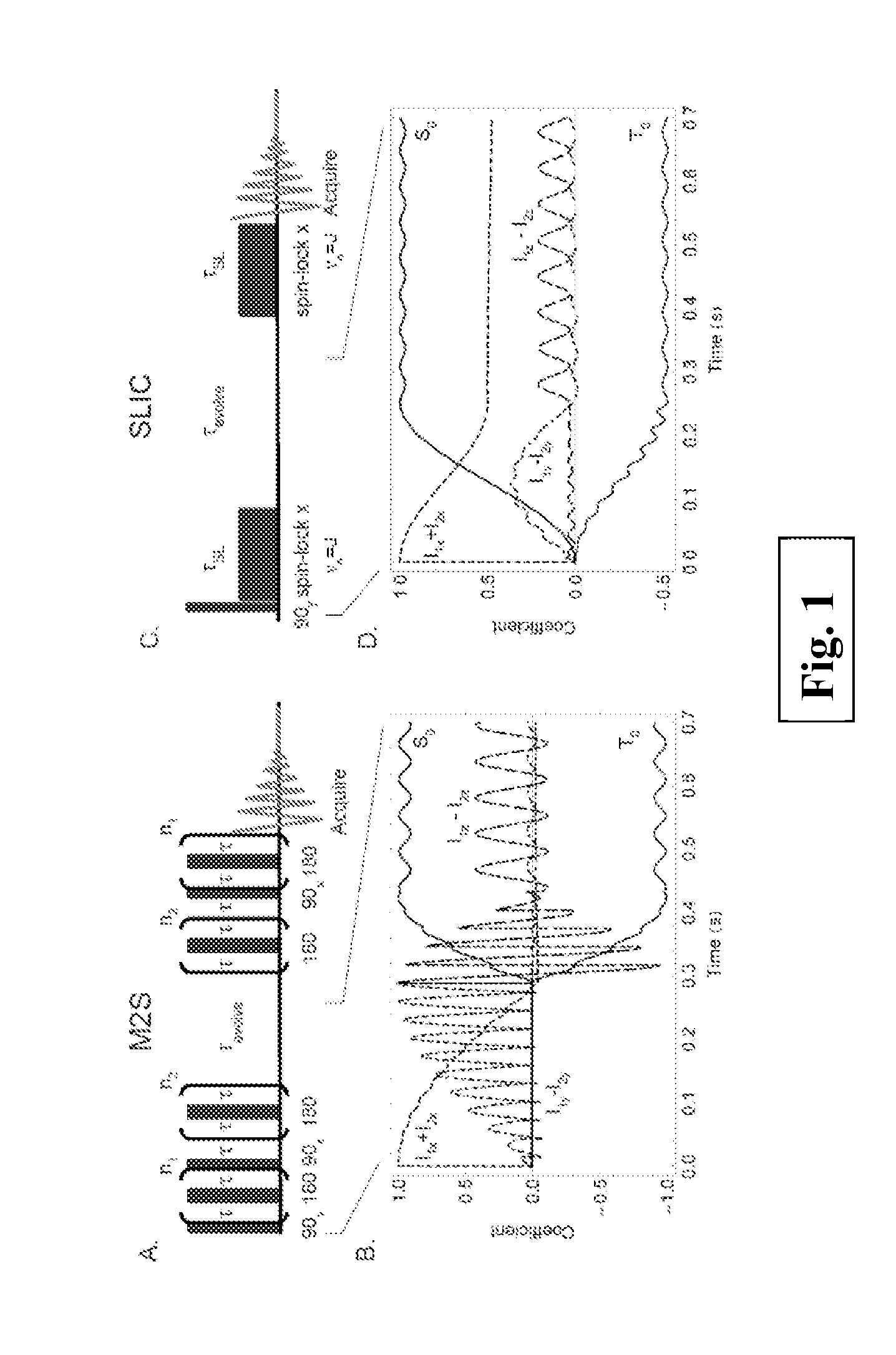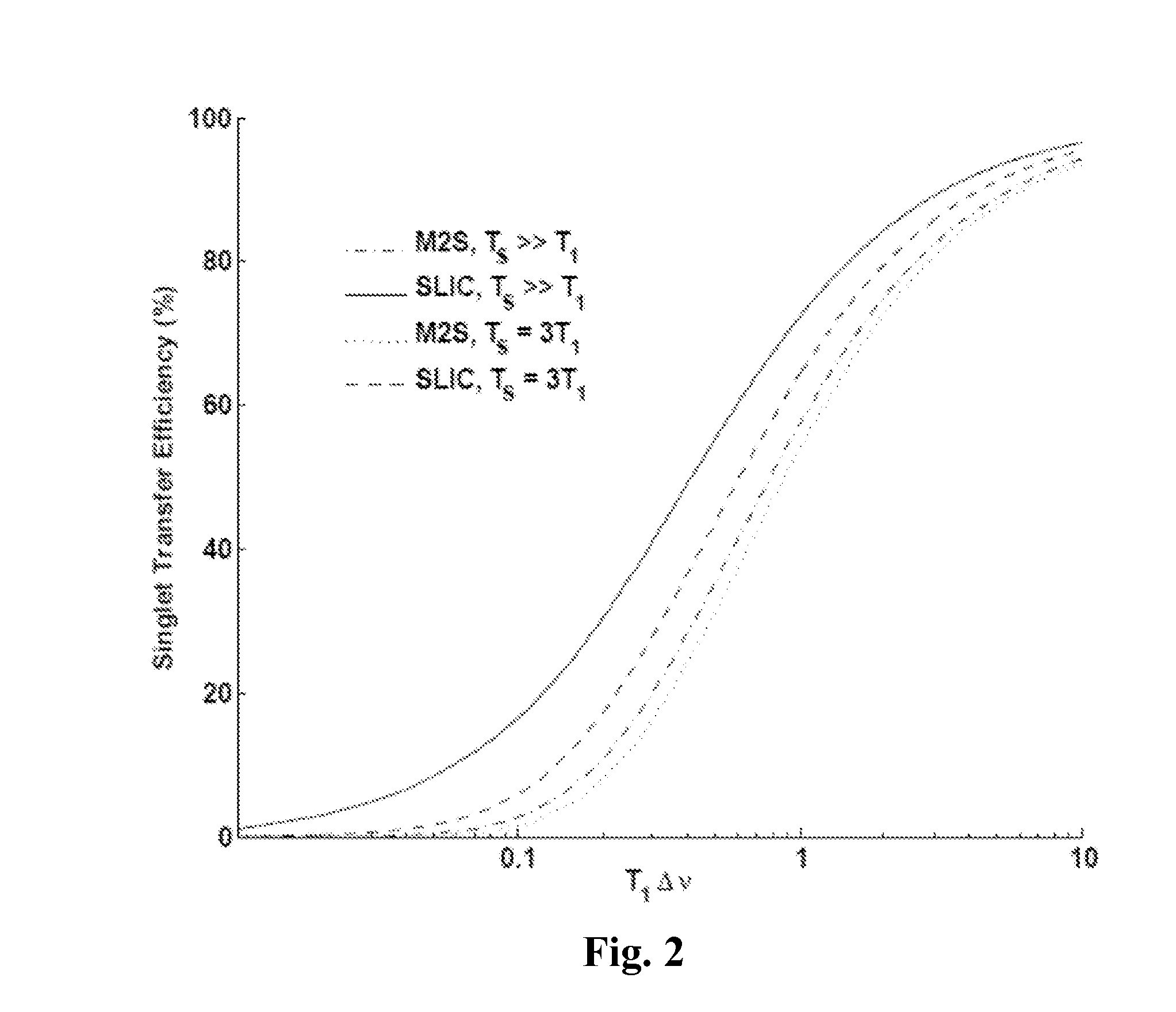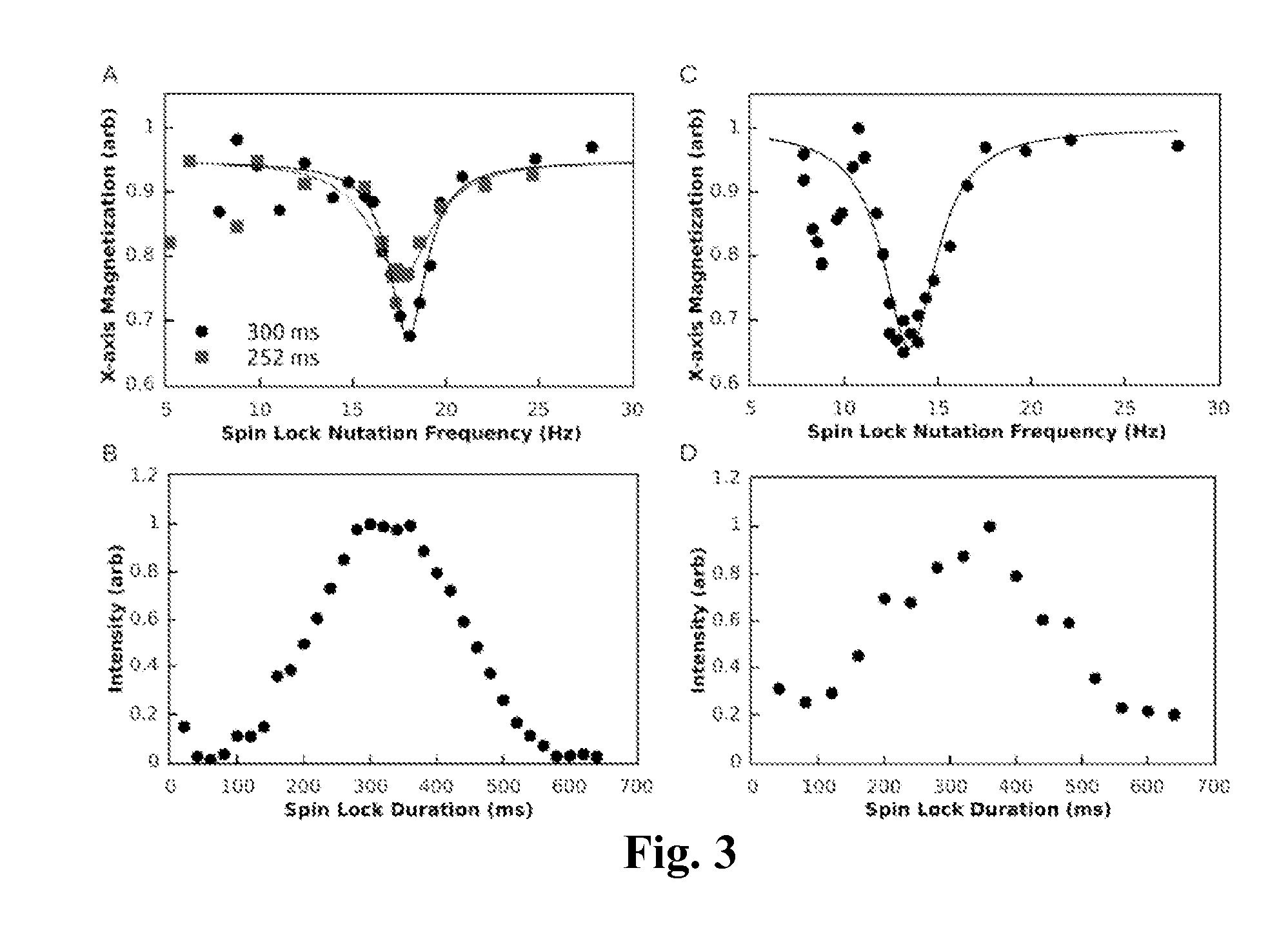Creation of Nearly-Equivalent Nuclear Spin Singlet States Using Spin-Lock Induced Crossing
a nuclear spin and singlet state technology, applied in the field of nuclear magnetic resonance (nmr), can solve the problems of not being able to transfer magnetization to the singlet state, difficult or impossible to chemically identify molecule(s) in a sample,
- Summary
- Abstract
- Description
- Claims
- Application Information
AI Technical Summary
Benefits of technology
Problems solved by technology
Method used
Image
Examples
example 1
[0078]FIG. 1A shows a typical experiment in which the M2S sequence is used to create a singlet state and then return the singlet state to transverse magnetization after an evolution time, Tevolve. FIG. 1B shows the results of a simulation using the Spin Dynamica program for a typical singlet state preparation with M2S if relaxation is ignored. The first pulse train converts the magnetization into a singlet-triplet coherence with a relaxation time of T2 / 3≈T1 / 3, and the second pulse train creates a singlet population, with a relaxation time TS. The number of pulses required for the M2S sequence increases as the resonance frequency difference between spins, Δν, decreases and the singlet becomes closer to ideal. In many cases, the required sequence time approaches or exceeds T1 of the nuclei and significant magnetization can be lost before it is transferred to the singlet state, particularly during the first ⅔ of the sequence. For an ideal system, the time required for maximum singlet s...
example 2
[0081]To demonstrate the utility of SLIC for producing nuclear spin singlet states, NMR measurements were performed at 4.7 T on a 20 mM solution of the tripeptide phenylalanine-glycine-glycine (phe-gly-gly, Sigma Aldrich) in D2O. For comparison, the M2S sequence was first applied to the nearly-equivalent proton pair at δ=3.71 ppm. Optimized parameters for singlet creation was found to be n1=10, n2=5, and τ=14.4 ms. These values indicate J=17.4±0.1 Hz and Δν=2.8 Hz. A singlet lifetime of Ts=25.1±0.8 s was measured with no spin-locking applied during Tevolve. The intensity of the remaining magnetization after Tevolve=5 s was compared with the intensity of a one-pulse spectrum, and using the singlet lifetime to extrapolate the singlet intensity at Tevolve=0, estimating that 24% of the magnetization was transferred to singlet state and back, out of a theoretical maximum of 50%. The efficiency for each transfer was 69%.
[0082]To find the optimal spin-lock nutation frequency for SLIC, a mo...
example 3
[0085]Measurements were performed on a 20 mM solution of the tripeptide phenylalanine-glycine-glycine (phe-gly-gly, Sigma Aldrich) prepared in D2O. Nitrogen gas was bubbled through the solution for 5 minutes to displace dissolved oxygen. Proton NMR spectra were acquired with a Bruker 4.7 T spectrometer at 200 MHz. A reference spectrum was acquired with one 90 degree pulse followed by an FID acquisition. The spin-lattice relaxation time, T1, was measured for each nucleus using an inversion recovery sequence.
[0086]Pulse sequences to implement SLIC are shown in FIGS. 4A and 4B. The transmitter frequency is set to the average resonance frequency of the proton pair of interest. A π / 2 pulse is applied to create a coherence between (|T−+|T+√2 and |T0. Next, the phase is shifted 90 degrees and spin-locking is applied with a nutation frequency νn=J. In the resulting dressed state, the previous coherence is now a population difference between |φ−, and |φ+. After a time τSL=0.707 / Δν, this is c...
PUM
 Login to View More
Login to View More Abstract
Description
Claims
Application Information
 Login to View More
Login to View More - R&D
- Intellectual Property
- Life Sciences
- Materials
- Tech Scout
- Unparalleled Data Quality
- Higher Quality Content
- 60% Fewer Hallucinations
Browse by: Latest US Patents, China's latest patents, Technical Efficacy Thesaurus, Application Domain, Technology Topic, Popular Technical Reports.
© 2025 PatSnap. All rights reserved.Legal|Privacy policy|Modern Slavery Act Transparency Statement|Sitemap|About US| Contact US: help@patsnap.com



